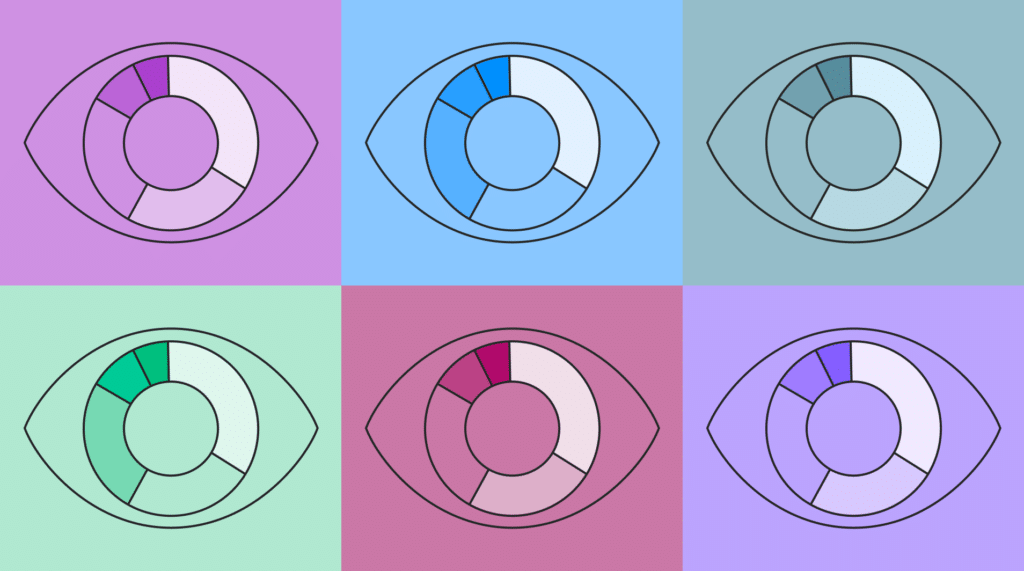
Building clear, efficient, and consistent experiences is a fundamental goal of Product Designers at Artera. Managing this goal at scale within a growing, fast-paced company can be a challenge. That’s why many tech leaders like Google, Apple, and Salesforce rely on design systems to codify design efforts to scale across their product. But these design systems are valuable for companies of any size. In fact, as of 2020 65% of companies say they use one and that number has only gone up.
At Artera, we believe that clear design creates confidence, unified experiences lead to more efficient teams, and that quality builds trust. Guided by these principles, we prioritize consistent and cohesive patterns, providing a sense of familiarity for the people using our platform and enhancing overall efficiency. Our commitment to accessibility acknowledges the diverse tools and tasks our users and patients manage, leading us to design patterns that cater to these varied needs.
In the landscape of healthcare technology companies, maintaining a consistent and unified experience is critical. By building a well-structured design system, Artera aims to do just that.
What is a design system?
A design system is a set of standards in a centralized collection of reusable components, patterns, and guidelines. At its core, the Artera design system provides a unified approach to creating user interfaces and experiences, offering a systematic and documented framework for designers and developers to follow.
This includes various elements, like our design principles, 11 typography styles, 31 colors in our palette, dozens of unique iconography, spacing and layout guidelines, 62 interactive elements, and accessibility considerations. By documenting and centralizing these, our design system helps our teams build and maintain our product with a consistent visual identity and user experience.
What does this mean for customers?
In healthcare, precision and reliability of tools, such as those provided by Artera for health systems, are critical to patients receiving the best communication experience and care possible. By systematizing our design to build more consistent experiences we can increase a user’s trust and reduce the need for staff to relearn or reinterpret interactions across the platform. It may seem small, but knowing where a button will be and what it will do without having to think too hard can enable healthcare staff to communicate more efficiently and effectively. In the end, this helps health systems build a trusting relationship with the community they serve. This expands beyond just small interactions as well. We use our design system to define larger patterns like how we might display a list of conversations or campaigns and maintain consistent filters and sorting and a user has access to the controls they need to interact with their data.
Additionally, our design system helps streamline the development process so we can deliver better experiences faster. By codifying these elements we empower designers and developers to create experiences akin to assembling building blocks. The page layout, the content, and the actions snap into each other like blocks. This reduces decision making about what the page should look like, or where buttons should be placed, for example. Building our product in this way allows for consistent code implementation and minimizes bugs related to inconsistencies in design and functionality. Without a design system a new tool might take months to design and build. A design system can help reduce that timeline to a few weeks or even days, providing value much faster.
Consistency in design and development contributes to a more performant, intuitive user experience, ultimately benefiting both healthcare staff and patients.
What’s next for the Artera design system?
With the development of our design system, we aim to continue fulfilling our design principles and commitment to the folks we serve. It’s a long term commitment with the goal of continuous evaluation and reiteration of how Artera creates and maintains strong customer experiences. Maintaining a design system in a healthcare tech company is a multifaceted journey. By focusing on clear, efficient, and high quality components and research, while also being adaptable to health systems changing needs, we can create a design system that not only enhances the user experience but further contributes to the overall success of the health system as a whole.
The contents of this post as well as the opinions expressed herein do not contain business advice. The business information provided is for general informational and educational purposes only and is not a substitute for professional advice. Accordingly, before taking any actions based upon such information, we encourage you to consult with the appropriate professionals. THE USE OR RELIANCE OF ANY INFORMATION CONTAINED IN THIS POST IS SOLELY AT YOUR OWN RISK.




